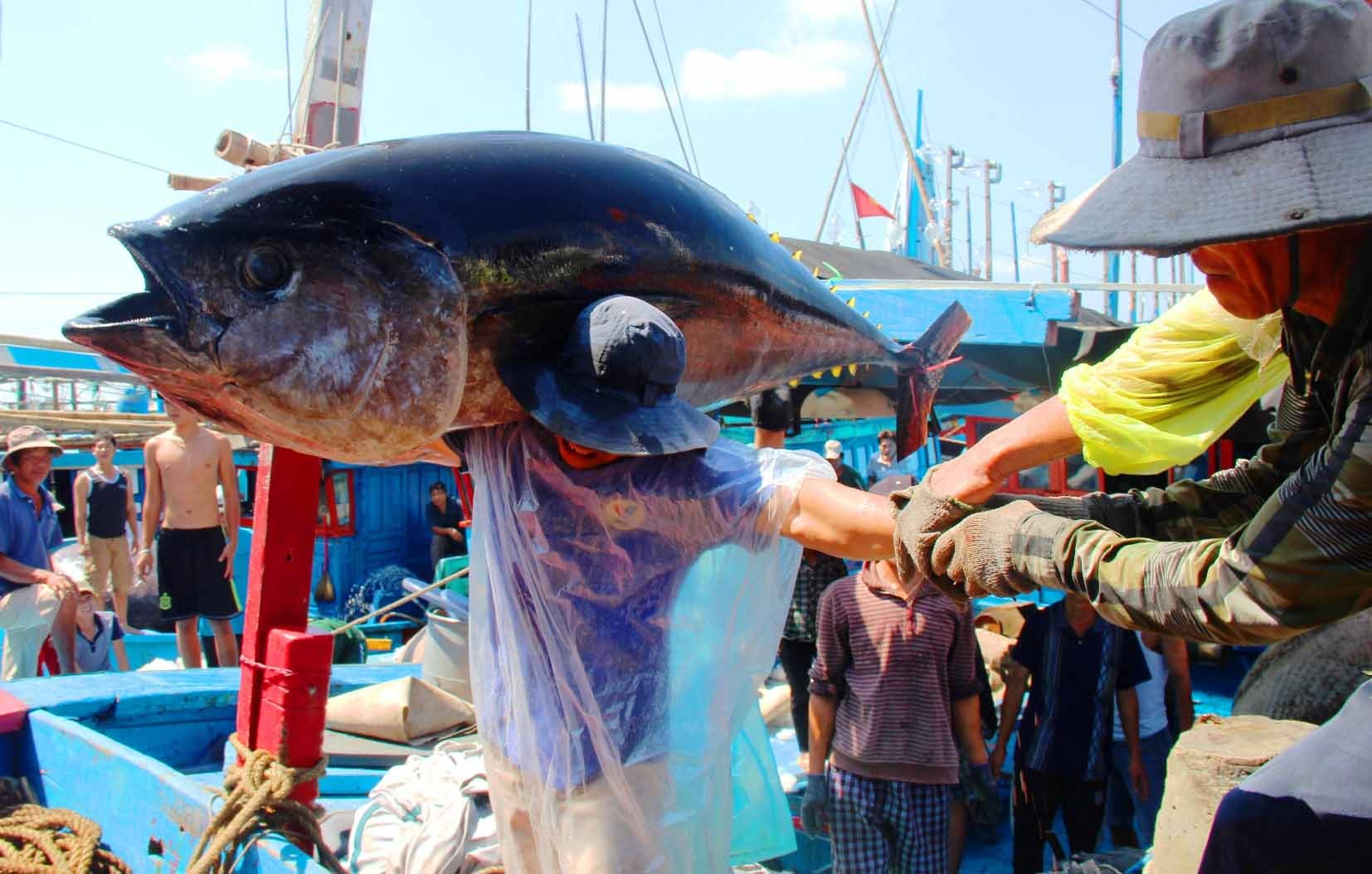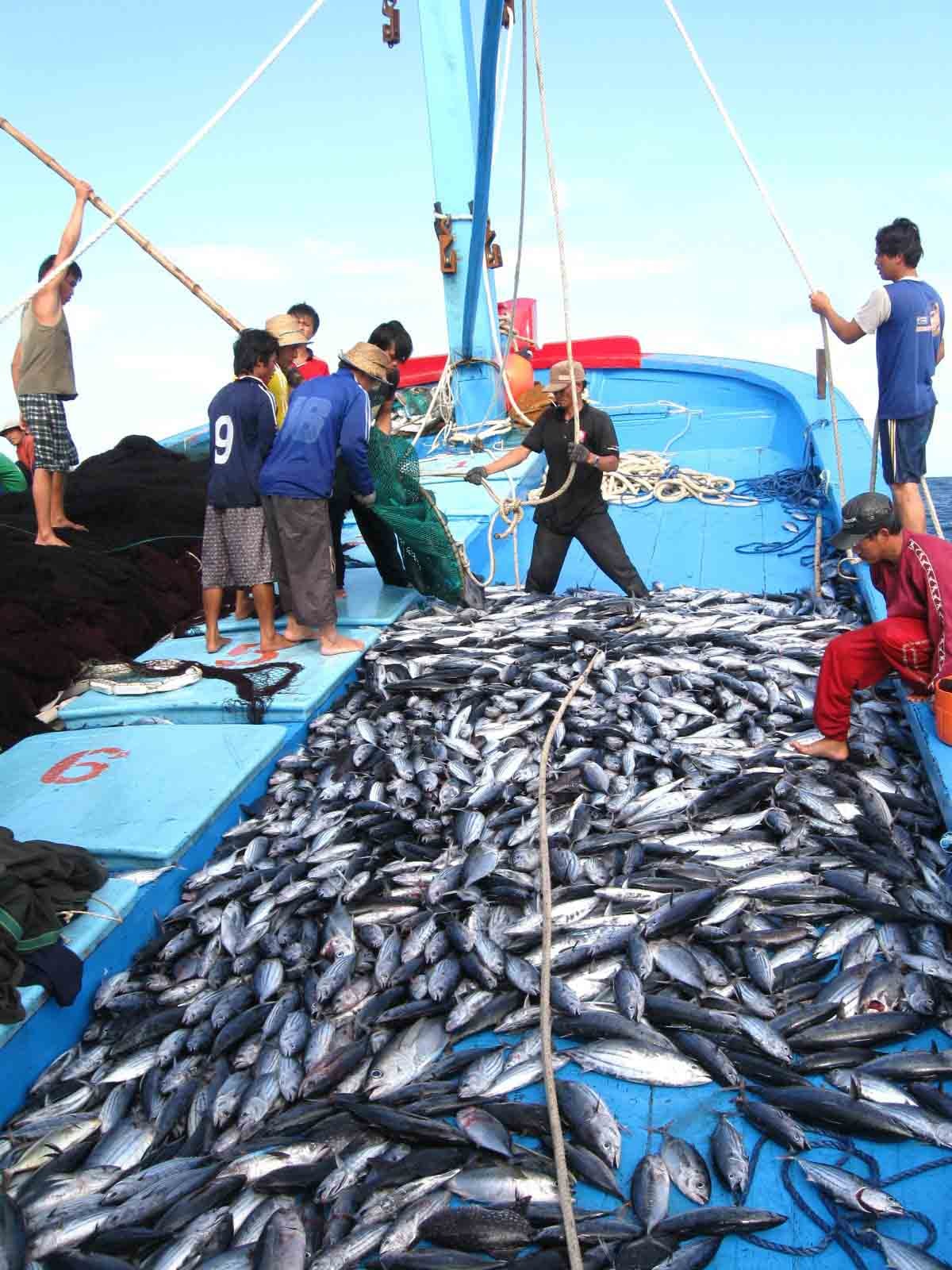When did the traditional April 1st fishing day in Vietnam begin?
In late March and early April 1959, when visiting fishing villages and fishermen on Tuan Chau and Cat Ba islands, Uncle Ho advised, "Our silver sea is owned by our people." His teachings expressed the great idea of arousing awareness of protecting the sacred sovereignty of the sea and islands of the Fatherland and promoting the role of the people, including fishermen, in developing the marine economy and protecting national sovereignty at sea.
In 1995, the Prime Minister chose April 1 as Vietnam Fish Day.
 |
Binh Dinh fishermen caught a large catch of fish. Photo: Du Tuan |
Since the 1950s, recognizing the increasingly important position and the multifaceted benefits that fisheries can bring to the national economy, along with the process of economic recovery and development in the North, our Party and State have begun to pay attention to developing fisheries and forming state management agencies in this field. The establishment of the Directorate of Fisheries in 1960 and after the country's reunification, the Ministry of Marine Products was established in 1976 and reorganized into the Ministry of Fisheries in 1981, affirming the important role of the Vietnamese fisheries industry in the national economy.
The Fisheries industry has entered a period of comprehensive development in terms of exploitation, farming, logistics services, processing and exporting aquatic products, promoting research and application of scientific and technological advances in production, and expanding international cooperation to maintain a continuous growth rate throughout the past period.
After the Ministry of Fisheries merged with the Ministry of Agriculture and Rural Development at the end of 2007, on March 15, 2010, the Directorate of Fisheries under the Ministry of Agriculture and Rural Development officially came into operation according to Decision No. 05/2010/QD-TTg of the Prime Minister. The fisheries sector continues to affirm its important role in the national economy, contributing to the overall growth of agriculture and rural development in recent years.
 |
A net full of fish of fishermen in Binh Dinh. Photo: Du Tuan |
The fisheries industry has proactively taken the lead in international integration, promoting the application of advanced science and technology in production, linking raw material production with processing, promoting trade, and expanding export markets.
In particular, since the early 1990s, we have focused on innovating product quality and safety management methods, approaching to meet the highest demands in this field of major markets, thereby quickly establishing and standing firmly in the world's largest seafood markets.
In that mechanism, the core and pioneering role of processing and exporting enterprises, community connections and the formation of Associations and Unions are the inevitability of the integration process and the direct driving force for the industry's production reorganization. Those correct solutions have helped the industry, in the late 20th century and the first decades of the 21st century, achieve important results in its development.
From a small-scale, artisanal fishery operating in nearshore areas, seafood exploitation has shifted towards becoming a mechanized fishery, increasing exploitation in offshore waters, exploiting high-value objects for export, linking exploitation with protection and development of resources and ecological environment. Aquaculture has become a concentrated commodity production industry with advanced technical level, developing diverse farming objects in all freshwater, brackish and marine water bodies in a sustainable direction, protecting the environment and harmonizing with other economic sectors.
Seafood processing and export has developed very rapidly, approaching the advanced technology and management level of the region and the world. Thanks to the innovation in product quality and safety management methods, approaching and gradually meeting the highest demands of important markets, creating prestige and standing firmly in the largest seafood markets in the world such as the EU, Japan, the United States, Korea, Russia, etc. The logistics system of offshore routes, island routes, and coastal routes associated with fisheries service centers has been initially formed.
Since its inception, over 58 years of development, the fisheries sector has grown rapidly and steadily, becoming an important economic sector in the national economy, contributing to the transformation of the agricultural and rural structure, poverty reduction, and improving the lives of communities not only in coastal rural areas, but also in mountainous, midland and Central Highlands areas. The civilian presence of tens of thousands of vessels directly exploiting seafood at sea has made an important contribution to maintaining security and protecting the sovereignty of the sea and islands of the Fatherland.
| Celebrating the 58th anniversary of the Fisheries Industry's Traditional Day (April 1, 1959 - April 1, 2017), the Fisheries industry is continuing to strive to overcome difficulties and challenges, successfully implementing the project "Restructuring the fisheries industry towards increasing added value and sustainable development" in the overall restructuring of the agricultural sector to achieve the goals set out in the Fisheries Development Strategy to 2020, contributing worthily with the whole country to make our country a strong maritime country and rich from the sea as our Party has oriented and also the aspiration of fishermen and our people. |
According to L.Tri/danviet
